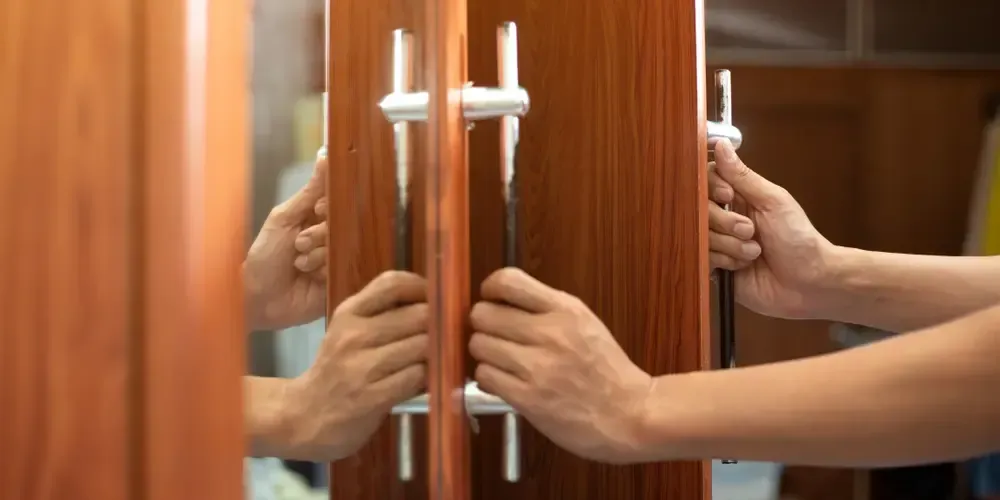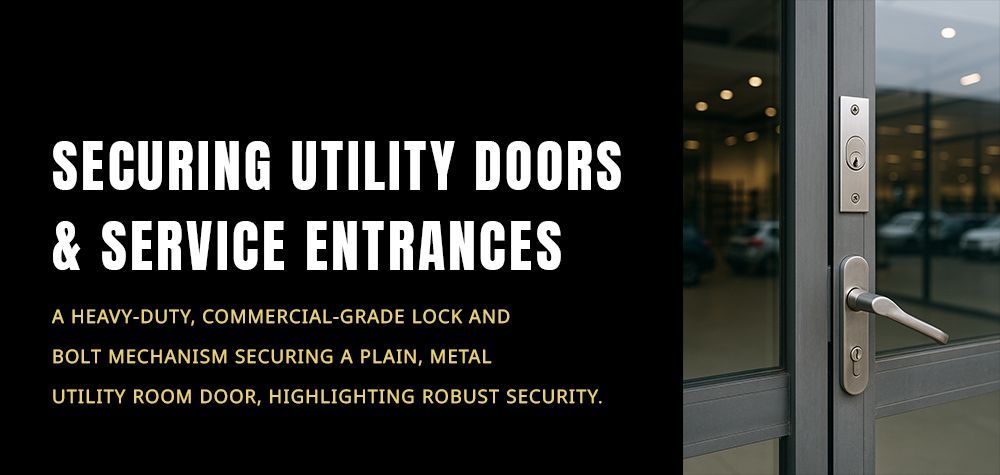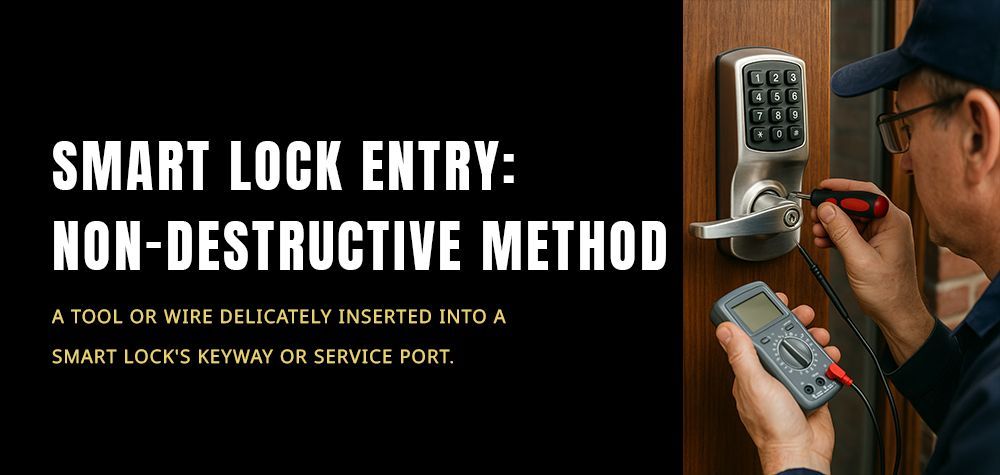How To Lock A Closet Door Without A Lock
Ensuring privacy and security within your living space often involves finding creative solutions, especially when it comes to securing closet doors without a lock. Whether you're looking to prevent unwanted access or simply need a temporary solution, there are numerous effective methods available. From using everyday items like doorstops and belts to installing portable door locks and security bars, this guide will explore practical techniques for enhancing closet door security without the need for traditional locks. With these simple yet effective strategies, you can create a safe and private space within your home or office.
Read more about Guide to lock snapping and how to prevent it!
Install a Door Latch or Bolt
Installing a door latch or bolt is a straightforward and effective way to secure a closet door without a lock. These devices provide a simple mechanism for securely closing and locking the door from the inside. Here's how to install them:
Steps:
Choose the Right Latch or Bolt:
- Select a surface-mounted door latch or barrel bolt that is suitable for your closet door's material and thickness.
Position the Latch or Bolt:
- Determine the desired location for the latch or bolt on the interior side of the closet door.
- Mark the positions for the screws using a pencil or marker.
Attach the Latch or Bolt:
- Use a screwdriver to secure the latch or bolt in place by screwing it into the marked positions on the door.
- Ensure that the latch or bolt is aligned properly and securely attached to the door.
Test the Operation:
- Close the closet door and engage the latch or bolt to ensure it functions correctly.
- Verify that the latch or bolt securely holds the door closed without any gaps or looseness.
Optional: Add Reinforcement:
- For added security, consider reinforcing the installation by adding longer screws or additional hardware for increased strength.
Read more about Lock a door without lock!
Make a Barricade Using the Back of a Chair
Creating a barricade using the back of a chair is a quick and improvised method to secure a closet door without a lock. This technique utilizes the weight and size of the chair to block the door from opening fully. Here's how to do it:
Steps
Select a Sturdy Chair:
- Choose a chair with a solid and stable backrest that can effectively block the closet door.
Position the Chair:
- Place the chair in front of the closet door, ensuring that the backrest is facing the door.
Align the Chair:
- Adjust the position of the chair so that the backrest is flush against the closet door, covering as much of the door's width as possible.
Secure the Chair:
- Push the chair firmly against the door to create a barricade, preventing the door from swinging open.
Adjust as Needed:
- Fine-tune the position of the chair to ensure a snug fit against the door, minimizing any gaps or openings.
Optional: Add Weight or Support:
- If necessary, place heavy objects or weights on the seat of the chair to provide additional stability and reinforcement.
Tie a Belt or Rope
Tying a belt or rope around the closet door handle and a stationary object is a simple yet effective way to secure the door. This method utilizes tension and restraint to keep the door closed securely. Here's how to do it:
Steps
Select a Belt or Rope:
- Choose a sturdy belt or rope that is long enough to reach from the closet door handle to a nearby stationary object, such as a doorknob or furniture.
Wrap Around the Door Handle:
- Wrap one end of the belt or rope around the closet door handle, ensuring it is securely looped and tightly fastened.
Secure to a Stationary Object:
- Extend the other end of the belt or rope to a stationary object located nearby, such as a doorknob or heavy piece of furniture.
Tie Securely:
- Tie a tight knot or secure the belt/rope around the stationary object, creating tension and preventing the door from being opened.
Adjust as Needed:
- Fine-tune the tension of the belt or rope to ensure the door is securely closed, with minimal slack or movement.

Insert a Portable Door Lock
Inserting a portable door lock is a convenient and effective way to secure a closet door without a permanent lock. These devices are designed to clamp onto the door and frame, providing an additional layer of security. Here's how to use them:
Portable Door Lock:
- Choose a portable door lock that is compatible with your closet door's thickness and material.
- Insert the lock into the gap between the door and the door frame.
- Tighten the lock to secure it in place, ensuring a snug fit.
- Engage the locking mechanism to prevent the door from being opened from the outside.
Read more about how to fix a loose door knob!
Install a Security Bar
Installing a security bar is a simple yet reliable method to reinforce closet door security. These adjustable bars are designed to brace the door from the inside, preventing it from being pushed open. Here's how to install one:
Security Bar:
- Choose a security bar that is adjustable and suitable for your closet door's width.
- Place the bar at an angle against the closet door and the floor.
- Adjust the length of the bar to ensure a tight fit, with the ends securely pressed against the door and the floor.
- Extend the bar to apply pressure and brace the door, preventing it from being pushed open.
Stick a Fork in It
Sticking a fork in the gap between the closet door and the door frame is a makeshift method to prevent the door from opening fully. This technique utilizes the fork's prongs to create resistance and impede the door's movement. Here's how to do it:
Fork Jam:
- Select a sturdy fork with straight and rigid prongs.
- Insert the fork vertically into the gap between the closet door and the door frame.
- Position the fork in a way that the prongs catch onto the door frame, creating resistance and preventing the door from swinging open.
- Adjust the position of the fork as needed to ensure a snug fit and maximum effectiveness.
Prop Up a Door Jammer
Propping up a door jammer against the closet door is an effective method to reinforce security and prevent unauthorized access. These adjustable devices are designed to brace the door from the inside, preventing it from being pushed open. Here's how to use them:
Door Jammer Prop:
- Choose a door jammer that is adjustable and suitable for your closet door's width.
- Place the door jammer at an angle against the closet door and the floor.
- Extend the door jammer to apply pressure and brace the door, preventing it from being pushed open.
- Ensure that the door jammer is securely positioned and that the base makes full contact with the floor for maximum stability.
Install a Floor Barricade
Installing a floor barricade is a robust method to fortify closet door security. These barricades are typically floor-mounted and are designed to prevent the door from being opened fully. Here's how to install one:
Floor Barricade:
- Choose a floor barricade that is suitable for your closet door's dimensions and construction.
- Position the floor barricade in front of the closet door, aligning it with the door's edge.
- Secure the barricade to the floor using screws or mounting hardware, ensuring it is firmly anchored in place.
- Test the barricade to ensure it effectively obstructs the door's movement and prevents it from being opened fully.
Conclusion
In conclusion, securing a closet door without a lock is achievable through various creative and practical methods outlined in this guide. Whether you opt for makeshift solutions like sticking a fork in the gap or utilizing household items like belts or ropes, or invest in specialized devices such as portable door locks, security bars, or floor barricades, there are options suitable for different preferences and needs. These methods provide an effective means of enhancing privacy and preventing unauthorized access to your belongings within the closet.
It's essential to choose a method that aligns with your specific requirements and ensures the safety and security of your living space. Additionally, while these techniques offer temporary or improvised solutions, it's important to consider long-term security measures and invest in permanent locks or reinforcements for sustained protection.
Call Us Any Time!









